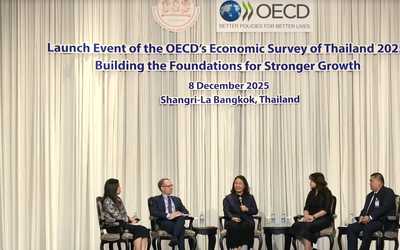Stylized Facts on Thailand's Residential Electricity Consumption: Evidence from the Provincial Electricity Authority
Abstract
This paper documents a few stylized facts of the residential electricity consumption in Thailand. Using an administrative billing records of 16 million residential meters, we find the following stylized facts and potential uses of the data. First, electricity consumption pattern can be used as proxies for household's wealth and wealth inequality since it reflects ownership of durable electrical appliances. Second, bill payment choices suggest that a majority of the households still face non-trivial transaction costs in paying their utility bills. Lastly, the electricity consumption pattern suggests that wealthier households are more sensitive to the temperature change but are less sensitive to the change in price.









